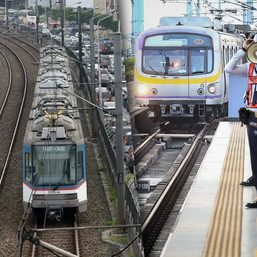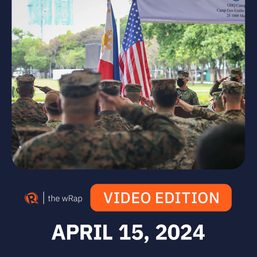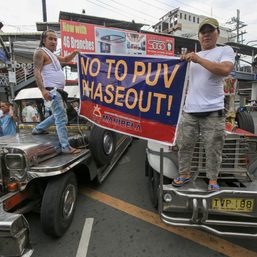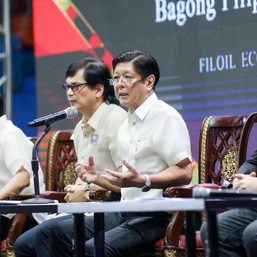SUMMARY
This is AI generated summarization, which may have errors. For context, always refer to the full article.
![[ANALYSIS] How can Filipinos veer away from car-centric future?](https://www.rappler.com/tachyon/2023/04/TL-car-centric-april-14-2023-3.jpg)
This past Holy Week resulted in traumatic scenes in the annual rush to and from the provinces.
My family headed north of Luzon on Maundy Thursday, and the usual trip lasting 6-7 hours easily became 10 hours.
Virtually the entire North Luzon Expressway (northbound) was bumper-to-bumper. Waze redirected me out of NLEX twice in a vain attempt to shorten the travel time. And when we arrived at our destination province, gridlocks greeted us even in some of the smaller towns.
The trip home on Easter Sunday was just as bad. We were on the road for nearly 13 hours, complicated by an overheating episode that resulted in several long stops. In that time, I can’t help but think that I could’ve gone back and forth to Seoul or Bangkok at least thrice.
One solution to this modern day penitencia was obvious: just avoid the rush by going to the provinces earlier/later, and go back to Metro Manila earlier/later. But not all Filipinos have that luxury.
Another option is to just stay in Metro Manila, and indeed many people posted Zen scenes of empty streets in places like Quezon City and Makati. But for many people, family obligations demand going to the provinces this time of the year.
All about incentives
The Holy Week rush was a painful reminder that there’s just too many cars around.
People are obviously making up for the lost travel opportunities during the height of COVID. But new car sales are picking up, too.
Data show that in 2021 and 2022, new car sales jumped by 20% and 31%, respectively, just as COVID-19 restrictions eased: malls, offices, and schools reopened, and life resumed for many. In fact, the 31% growth in 2022 is the highest in recent memory (see below).
Owning cars in this country means many things for different people. It’s partly a status symbol, but at the same time, it’s an adaptation to the abysmal lack of decent public transportation in Metro Manila.
If we want to reduce car ownership and usage, the incentives of doing so need to be changed as well.
First and foremost – and if it isn’t obvious enough – there needs to be an overhaul of public transportation in the country. Government is moving in this direction to some extent. More trains are coming, such as the MRT-7 line from Quezon City to Bulacan, and the Metro Manila Subway from Mindanao Avenue to NAIA. But we need a lot more of these trains.
Public utility vehicles also need to be modernized, but in a way that will allow for a “just transition” especially for jeepney drivers and operators.
Second, the government must learn to move away from car-centric infrastructure projects (such as highways), and promote commuter- or people-centric projects.
The pandemic spurred the construction of bike lanes all over the metro, but more needs to be done to promote active transportation. To encourage walking, sidewalks also need to be overhauled, and footbridges mustn’t be so steep.
Unfortunately, the premium over cars manifests in the desire to construct more highways and expressways, like in ex-president Rodrigo Duterte’s infrastructure spending program called “Build, Build, Build,” as well as President Ferdinand Marcos Jr.’s P9-trillion “Build Better More.”
Third, at the same time that public transportation is being overhauled, car ownership must be discouraged.
In Figure 1, note the slowdown in new car sales after the TRAIN law imposed higher excise taxes on some vehicles. The higher excise taxes on petroleum products – coupled with high world oil prices then – also presumably helped discourage car ownership.
Setting higher interest rates could do the trick as well, by making car loans costlier. The Bangko Sentral has indeed been raising interest rates in its fight against inflation lately. But as the data show, this hasn’t prevented the high growth of car sales alongside the economy’s recovery from the pandemic recession.
Aside from car ownership, car usage ought be discouraged, too.
For instance, we can be smarter with traffic policies. Many other countries have adopted “congestion pricing,” or charging car users steep fees for using roads at peak hours. This can be implemented not just on major expressways, but also in city roads.
Meanwhile, the number coding policy – which has been in place in one form or another since the mid-1990s – needs to be scrapped insofar as it incentivizes the purchase of new vehicles to beat the coding policy.
Building codes must also be revised to limit the construction of parking spaces, which not only eat up a lot of space literally but also encourage the ownership and use of cars.
We can also encourage working form home more, since many people got used to it anyway during the height of the lockdowns.
Cars as ‘aspiration’?
Divorcing Philippine society from a car-centric culture will take decades of work and reforms. But at the outset, we also need to check our relationship with cars, and revisit our idea of what a good future looks like.
Take for instance Ambisyon 2040, the long-term visioning exercise of the National Economic and Development Authority (NEDA). In 2015 they surveyed about 10,000 people and came up with a document describing the “kind of life that people want to live” by 2040.
One striking result from that survey is that almost 80% of respondents said they wanted a “simple and comfortable life,” which includes “having a medium-sized home, having enough earnings to support everyday needs, owning at least one car/vehicle, having the capacity to provide their children college education, and going on local trips for vacation.”
This sounds good enough, except the part about having “at least one car/vehicle.” I’m afraid that if this is part of the accepted vision for the country, policymakers and politicians will tend to act in a way that realizes that vision.
Rather than cut down on car ownership and usage – precisely because of the ill effects we see even now – we might be heading toward a future depending even more on cars.
NEDA is careful to note that Ambisyon 2040 is not really a plan but a vision. But I just hope politicians and policymakers will see the difference and have enough guts to steer us away from a dangerous, more car-centric future ahead. – Rappler.com
JC Punongbayan, PhD is an assistant professor at the UP School of Economics and the author of False Nostalgia: The Marcos “Golden Age” Myths and How to Debunk Them. JC’s views are independent of his affiliations. Follow him on Twitter (@jcpunongbayan) and Usapang Econ Podcast.
Add a comment
How does this make you feel?
![[ANALYSIS] The economics of jeepney modernization](https://www.rappler.com/tachyon/2023/03/20230310-economics-jeepney-modernization.jpg?fit=449%2C449)








![[OPINION] Cities and public spaces should be for people first](https://www.rappler.com/tachyon/2024/04/imho-people-first-city-04132024.jpg?resize=257%2C257&crop_strategy=attention)

There are no comments yet. Add your comment to start the conversation.